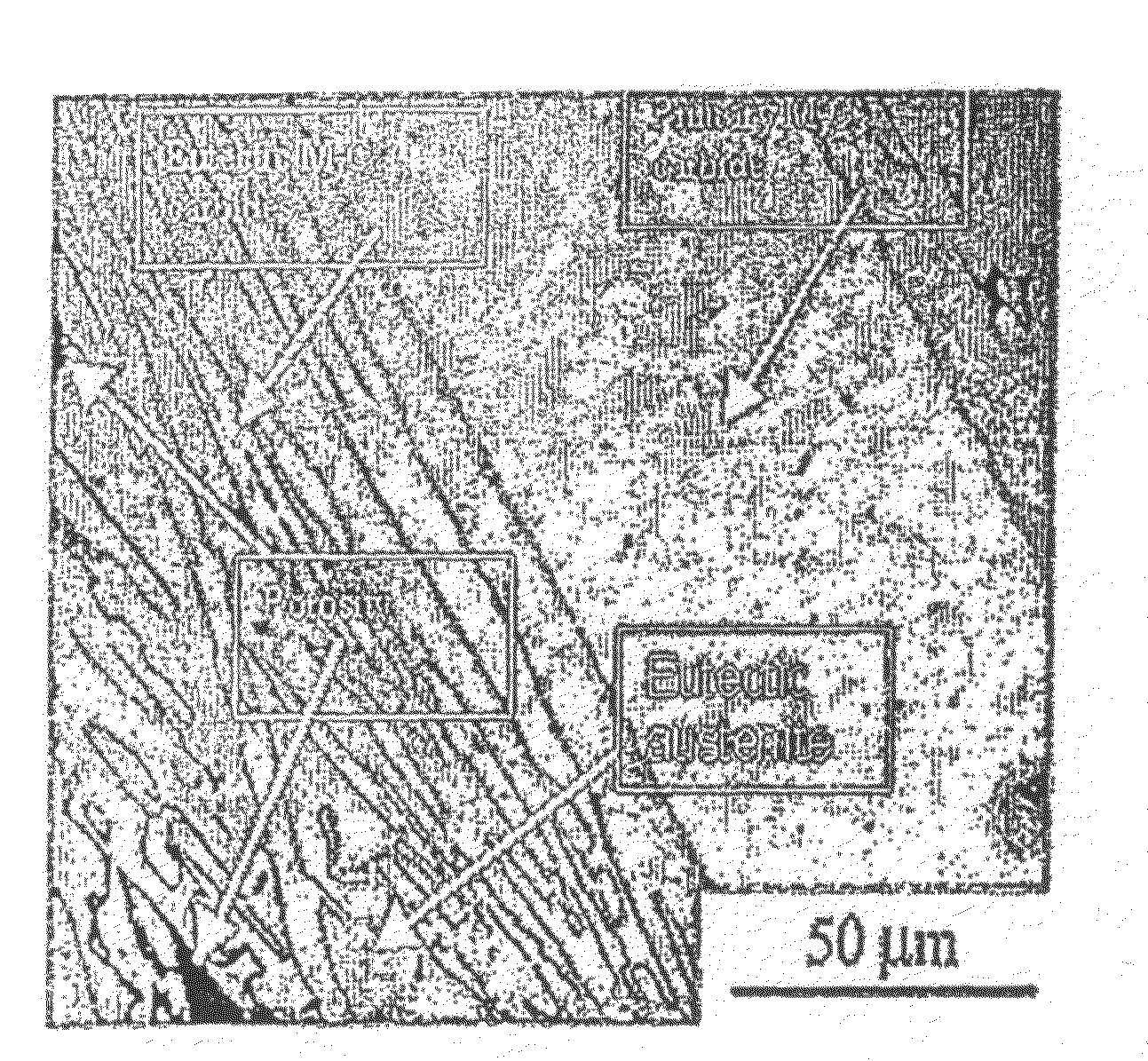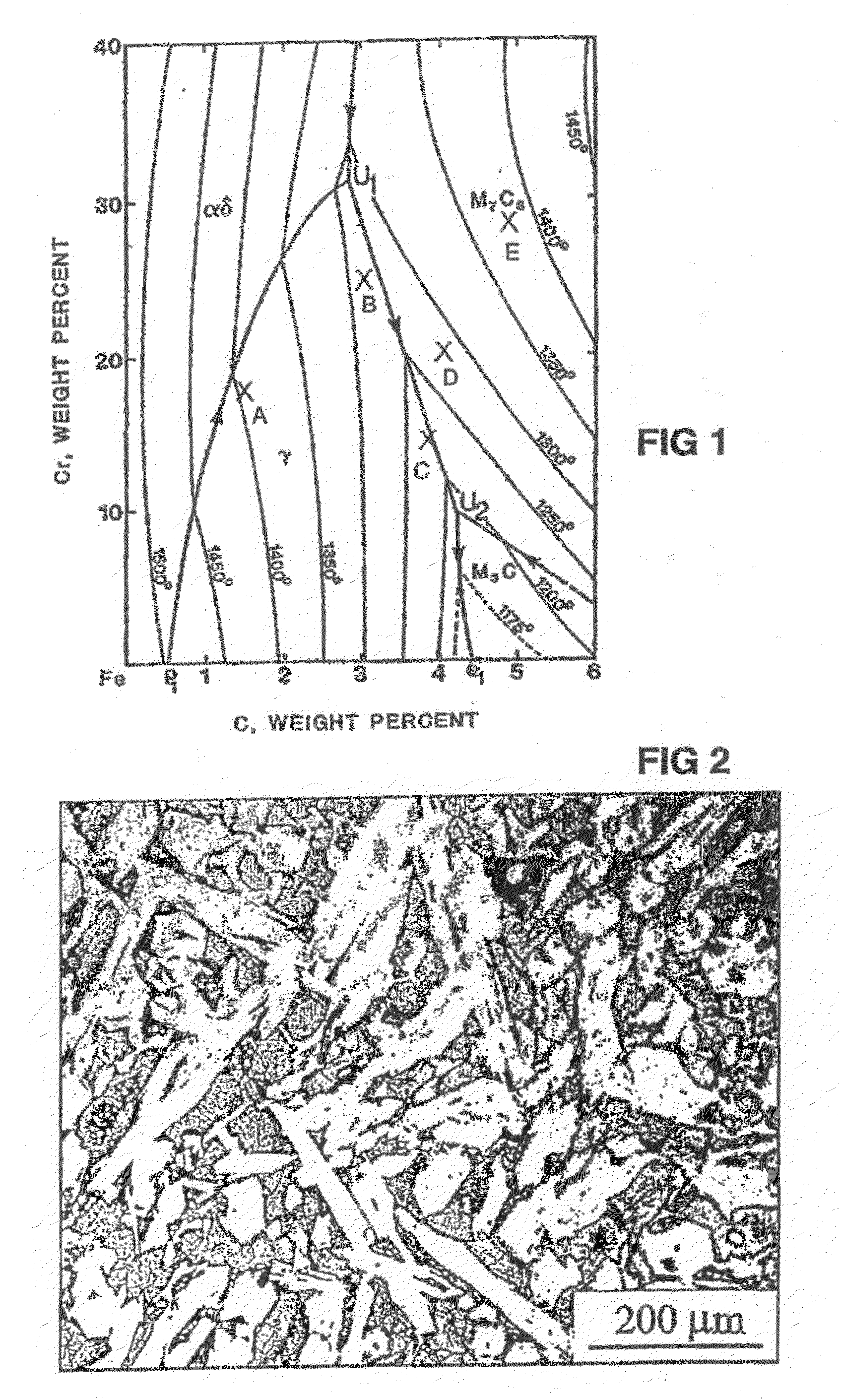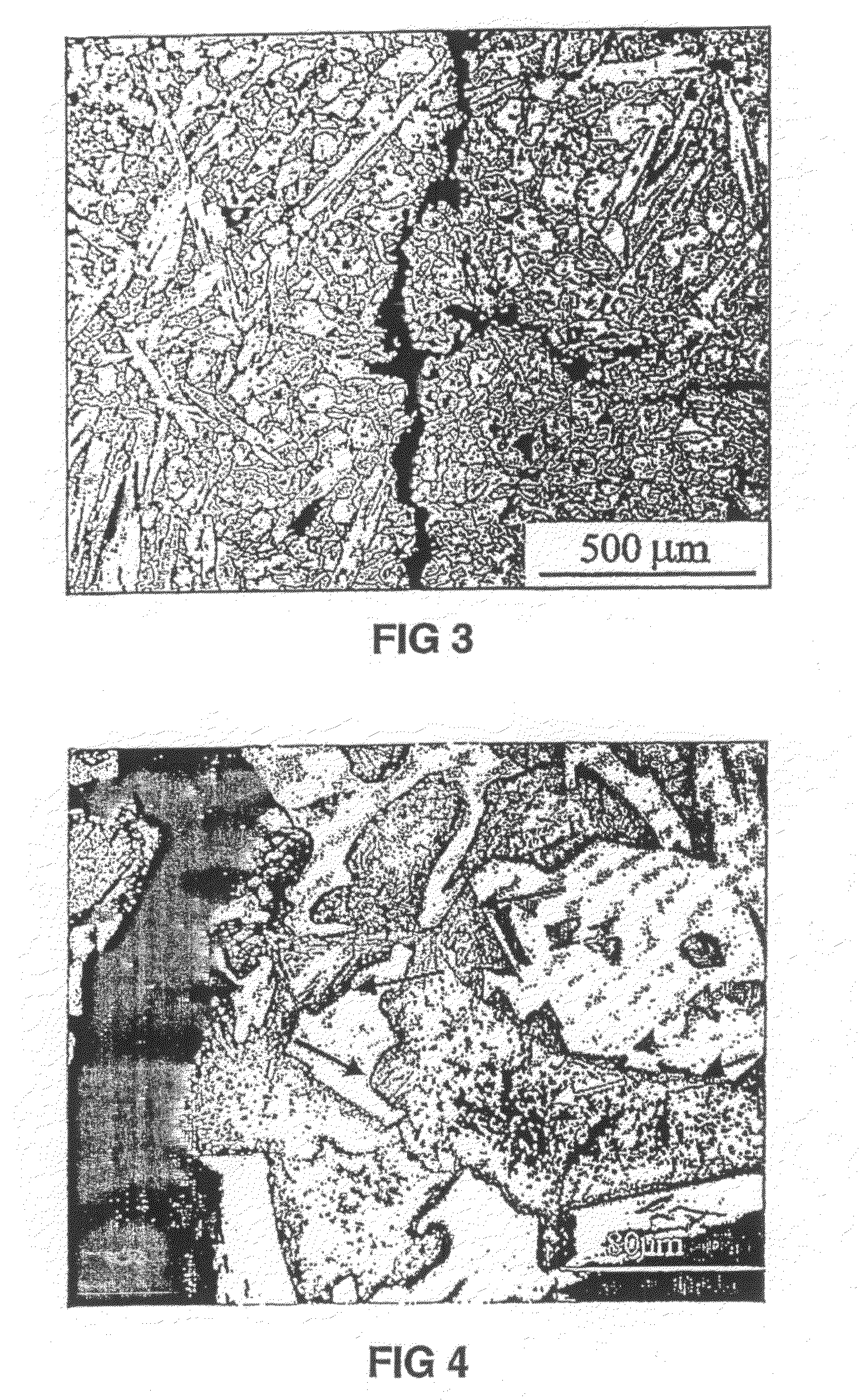Wear resistant alloy
a technology of chromium white iron and chromium chromium, which is applied in the field of wear resistance, can solve the problems of uneven thickness and uneven layering of carbides, and achieve the effects of increasing fluidity, increasing or decreasing the interconnectivity of m7c3 carbides, and increasing overall brittleness
- Summary
- Abstract
- Description
- Claims
- Application Information
AI Technical Summary
Benefits of technology
Problems solved by technology
Method used
Image
Examples
Embodiment Construction
[0062]FIG. 1 illustrates the liquidus surface projections for ternary Fe—Cr—C for high chromium white irons at the Fe-rich corner of metastable C—Cr—Fe liquidus surface. The ternary compositions have up to 6% carbon and up to 40% chromium. They also contain small percentages of manganese and silicon.
[0063]The liquidus surface projections in FIG. 1 can be used to show the relationship between microstructure and content of carbon and chromium. The region marked y indicates hypoeutectic compositions. The compositions at points A, B, C, D and E all fall within general ranges herein referred to as Group I.
[0064]Compositions A and B fall into the hypoeutectic region and are close to the boundaries. Eutectic microstructures fall on the line from U1 to U2, from a composition close to B along the line to point C. Hypereutectic compositions are within the region marked M7C3, which includes compositions D and E.
[0065]Any cooling regime that tends to enhance or promote the transition of austeni...
PUM
| Property | Measurement | Unit |
|---|---|---|
| Brinell hardness number | aaaaa | aaaaa |
| thick | aaaaa | aaaaa |
| thick | aaaaa | aaaaa |
Abstract
Description
Claims
Application Information
 Login to View More
Login to View More - R&D
- Intellectual Property
- Life Sciences
- Materials
- Tech Scout
- Unparalleled Data Quality
- Higher Quality Content
- 60% Fewer Hallucinations
Browse by: Latest US Patents, China's latest patents, Technical Efficacy Thesaurus, Application Domain, Technology Topic, Popular Technical Reports.
© 2025 PatSnap. All rights reserved.Legal|Privacy policy|Modern Slavery Act Transparency Statement|Sitemap|About US| Contact US: help@patsnap.com



